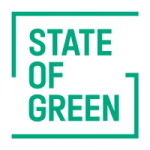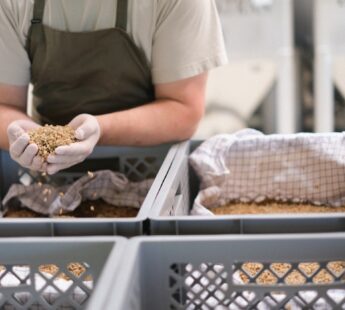News
Waste management
Waste prevention
Guiding consumers through date stamps to minimise food waste


It can be difficult to find out when to throw out food, and when it can actually last longer than the date. However, through a new initiative by the Danish food waste app ‘’Too Good To Go’’, Danish food producers can now assist the consumers in navigating in the jungle of date stamps by giving it a new wording. Several food products in Danish supermarkets are today labelled with a ‘’best before’’ date stamp. This, however, will soon change to a ‘’often still fresh after’’ stamp, which the objective of minimising food waste. The Danish companies involved include Arla, Carlsberg, Løgismose Meyer, Thise and Toms.
Avoiding incorrect assumptions
One out of three Danes assumes that ‘’best before’’ and “use-by” date stamps are identical in their meaning. This assumption sparked the initiative to change the phrasing of the date stamps. The goal is to make the message clear – you do not necessarily have to waste food that has exceeded the “best before” date. According to the Danish Ministry of Food and Environment, the date on the ‘’best before’’ stamp is instructive, which means that the consumers should assess if the food is eatable when it has exceeded the labelled date. This can be done by smelling it or by looking for mould.
-Related solution: Minimising food waste through vacuum-drying
Danish food manufacturers see great value in creating more attention and information on the importance of date labelling.
Country Director of Arla Denmark, Jakob B. Knudsen commented on the initiative; "It is important for Arla to contribute to the reduction of food waste, and we are pleased to strengthen cooperation on this important matter with a group of other actors. We have a goal of reducing food waste and therefore we have initiated activities throughout our value chain to live up to this. For that reason, this initiative on the date labelling, which we have also implemented in Sweden, is a natural next step for us. ”
Confusion leads to food waste
The aim is that the new phrasing will minimise the Danes’ amount of food waste. A report from the European Parliament states that more than half of the EU citizens do not understand the correct meaning of the ‘’best before’’ or the ‘use-by” date stamps and that around 10 per cent of the total amount of food waste in Europe is caused by date stamp confusion.
‘’The new phrasing “often still fresh after” still demands an assessment from the consumer. It is not either or, but instead, it is up to the consumer to use his or her logic sense’’, said Mette Lykke, CEO of the app Too Good To Go.
-Related solution: Odense Food Co-op
The inspiration for the wording ‘’often still fresh after’’ is, among other things, based on experiences from Norway, where several food manufacturers implemented this phrasing last year.
‘’Norway has had great experiences with the new wording. They have not conducted big studies yet, but based on what we hear from them, the purpose of the dates is now clear to the consumers’’, said Mette Lykke.
Researchers: Excellent initiative
When food manufacturers label their products with ‘’best before’’ date stamps, it often means that the quality of the product will decrease, not that the product poses a health risk.
Professor Hanne Bertram from the Department of Food Science at Aarhus University believes that the new wording will help to change the consumer’s perception of the food’s shelf life.
‘’I think many of us fear food poisoning, and of course, it is still important to throw out food products that have exceeded their ‘’use-by’’ date. However, a number of other food products do not pose a risk. I believe this is an excellent initiative that could lead us to minimise our food waste’’, said Hanne Bertram.
The new wording will be added to a number of food products in Denmark during 2019 on a voluntary basis.
Source: DR and Too Good To Go
You should consider reading
Perspective
Circular business models
+4















